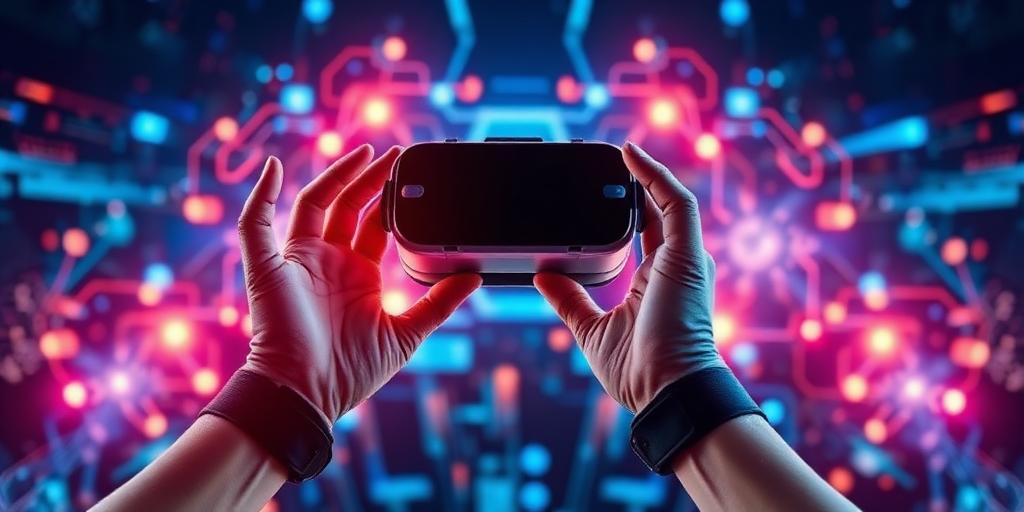How Virtual Reality is Sculpting Tomorrow's Immersive Experiences
Virtual Reality (VR) is no longer a futuristic concept confined to science fiction; it is a rapidly evolving technology fundamentally reshaping how we interact with digital content. At its core, VR's transformative power lies in its capacity to create deeply immersive experiences, transcending mere visual engagement to evoke a profound sense of presence. This article delves into the technological underpinnings and diverse applications that position VR as a key driver for future interactive paradigms.
The Pillars of True Immersion in VR
Achieving genuine immersion in VR extends far beyond high-resolution visuals. It is a sophisticated orchestration of sensory inputs designed to trick the brain into believing it is truly present within a simulated environment. Several critical technological advancements contribute to this:
- High-Fidelity Visuals: Modern VR headsets boast significantly improved resolutions, wider fields of view (FOV), and higher refresh rates. This minimizes the “screen-door effect” and reduces motion sickness, creating a seamless visual continuity that is crucial for sustained immersion.
- Advanced Spatial Audio: Beyond simple stereo, spatial audio technologies, often leveraging binaural rendering, create a three-dimensional soundscape. This allows users to accurately perceive the direction and distance of sounds, adding a vital layer of realism and enhancing environmental awareness within the virtual world.
- Haptic Feedback and Full-Body Tracking: Tactile sensations, delivered through haptic gloves, vests, or specialized controllers, introduce the sense of touch. When combined with full-body tracking systems, users can interact with virtual objects and environments with unprecedented physical agency, amplifying the feeling of presence.
- Physiological Integration: Emerging technologies like eye-tracking and biometric sensors are beginning to personalize the VR experience. Eye-tracking enables foveated rendering, optimizing visual fidelity where the user is looking, while biometrics can adapt experiences based on user arousal or stress, pushing the boundaries of dynamic responsiveness.
Beyond Gaming: Transformative VR Technology Applications
While often associated with entertainment, the reach of VR in creating immersive experiences spans a multitude of sectors, demonstrating its versatility and profound impact:
- Education and Training: VR offers unparalleled opportunities for experiential learning. Medical students can perform complex surgical simulations with realistic haptic feedback, engineers can conduct virtual factory tours, and employees can undergo safety training in hazardous environments without physical risk. This hands-on, risk-free learning environment significantly enhances skill acquisition and retention.
- Healthcare: From pain management and exposure therapy for phobias to rehabilitation for stroke patients, VR is proving to be a powerful therapeutic tool. Its ability to create controlled, engaging, and customizable environments makes it ideal for delivering personalized healthcare interventions.
- Architecture and Design: Architects and designers utilize VR for virtual walkthroughs of unbuilt structures, allowing clients to experience spaces before construction begins. This facilitates early identification of design flaws and fosters collaborative decision-making in an intuitive, immersive manner.
- Entertainment and Social Interaction: Beyond traditional gaming, VR is revolutionizing live events, virtual tourism, and social platforms. Users can attend concerts in virtual arenas, explore remote historical sites, or connect with friends in persistent virtual worlds, offering a level of engagement previously unattainable.
The Future Landscape of Immersive VR
The trajectory of VR points towards increasingly sophisticated and seamless immersive experiences. Research into brain-computer interfaces (BCIs) promises to blur the lines between thought and action within virtual environments, while advancements in haptics aim for full-body sensory realism. The ultimate goal is to achieve true “presence,” where the virtual world feels indistinguishable from physical reality.
However, challenges remain, including the need for more accessible hardware, standardization across platforms, and addressing issues like motion sickness for a broader user base. Despite these hurdles, the continuous innovation in VR technology and its expanding applications underscore its potential to redefine human interaction with digital content and reshape industries globally.
In conclusion, Virtual Reality is not merely a tool for escapism; it is a powerful medium for creating deeply engaging and transformative experiences across diverse domains. By meticulously engineering sensory inputs, VR cultivates a profound sense of presence, offering a glimpse into a future where the boundaries between the physical and digital realms become increasingly fluid.




